Clean beauty awareness is spreading quickly, and many cosmetic enthusiasts are taking a second longer to check product labels before buying cosmetics. While clean beauty has made a big splash in both makeup and skincare categories, it is a relatively new concept for perfumes. It’s a known fact that many chemicals are used to produce the exciting fragrances that help us smell nice. What we don’t know is exactly what ingredients are used to make the scents we spritz or rub on our bodies every day. As a result, natural perfume is gaining more traction, and for good reason.
Fortunately, thanks to the increasing awareness of the harmful ingredients found in most personal care items, consumers are also beginning to read the labels of perfumes. While you may not know the exact constituents of your favorite bottles, there is now enough information available regarding the harm that some of these chemicals cause to our health. There are new brands that have introduced natural perfumes that avoid toxic substances, giving you a chance to make the switch from synthetic fragrances to cleaner ones.
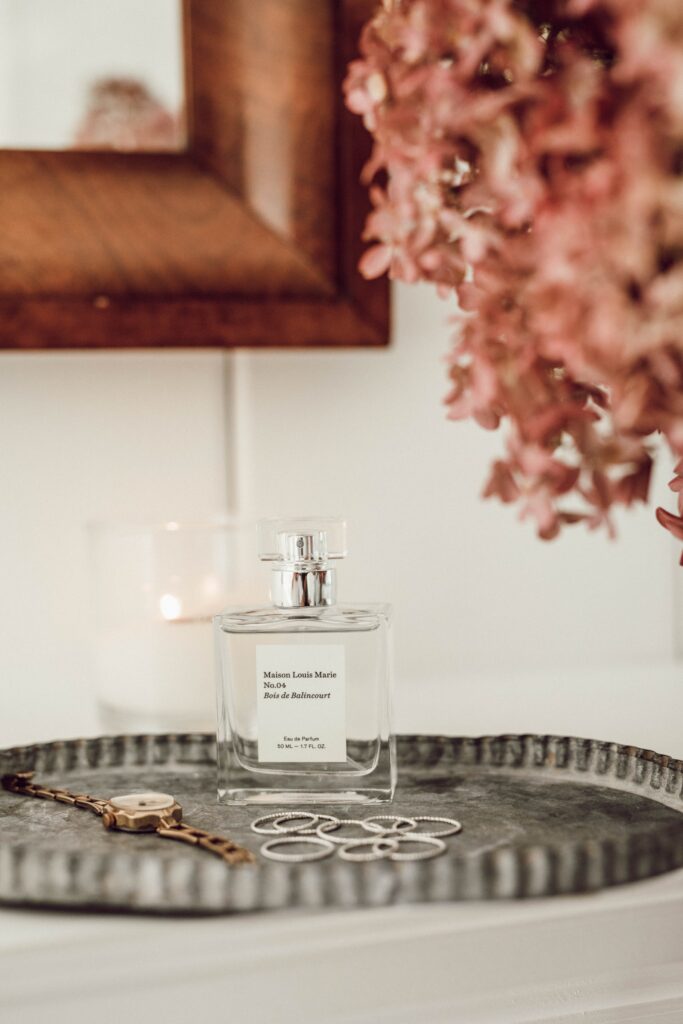
In this article, we’ll explore the problem with artificial perfumes and discuss why you should consider using natural fragrances. To make this change easier for you, we’ll line up a few of the top natural perfume brands available on the market and where to find them. If you’re one of those consumers who enjoy getting hands-on with the things you put on your body, you’ll find the DIY homemade perfume recipes especially helpful. You’ll also learn the difference between natural and synthetic fragrances, and why using natural perfumes isn’t a bad idea.
- The History of Perfume
- What is Natural Perfume?
- How is Perfume Made?
- How is Natural Perfume Made?
- Is Perfume Bad for You?
- Perfume Ingredients to Avoid
- Perfume Effect on the Brain
- Benefits of Natural Perfume
- Types of Natural Perfumes
- Where to Buy Natural Perfumes
- Natural Perfume Brands
- DIY Perfumes
The History of Perfume
Perfume is one cosmetic that has been around for thousands of years. Recently, archaeologists unearthed a fragrance factory believed to have existed in 2000BC in Cyprus. Other reports suggest that the art of perfume making and use originated in ancient Egypt. Egyptians used it for religious ceremonies, as part of daily wear, and for burial preparations. Other ancient civilizations that used fragrances are China, Mesopotamia, and the Indus Valley.
There’s a 9th-century book written by an Arabic chemist known as Chen Al-Kindi, titled Book of the Chemistry of Perfume and Distillation. This is a document that included hundreds of methods of making perfumes and the equipment used. There are claims that while the ancient civilizations mentioned above founded the art of making scents for use on the body, the Arabs and Romans further defined it, making it more mainstream.
In the past, perfumers used naturally derived ingredients, primarily from plants. Spices such as coriander, myrtle, herbs, and flowers were important raw materials. A Persian chemist, Ibn Sina, introduced the use of distillation to extract fragrant oils from flowers. This is a method still in use today.
The application of fragrances grew through the 11th to 19th centuries, especially in Europe. During that period, perfume was used to mask body odor, or as a mark of social and political standing by elite members of society. In 1693, one of the most popular types of perfume, eau de cologne, was first made by Giovanni Paolo Feminis. France and Italy emerged as the main producers of natural extracts used in perfume making in the 18th century. To this day, cities such as Paris and Sicily remain important centers in the fragrance industry.
What is Natural Perfume?
Natural perfume refers to cosmetic fragrance made using naturally-sourced ingredients. Such ingredients include essential oils, waxes, and flavors sourced from plants. Flowers, leaves, and seeds are some of the most popular parts of plants from which natural aromas are extracted. Besides using these ingredients, natural perfumes don’t contain synthetic chemicals such as parabens and phthalates in their formulations. Many natural fragrances also happen to be vegan, which means no animal products are used in their creation.
How is Perfume Made?
The main difference between how artificial and natural perfumes are made lies in their ingredients. The basic steps followed in creating both types of fragrances include:
Extraction
The first step is to extract oils from plant sources. Methods used in the extraction process include steam distillation, solvent extraction, expression, enfleurage, and maceration.
In steam distillation, plant parts such as flowers and leaves are placed on a still and steamed until the oils separate.
During solvent extraction, plants are dissolved in a solvent such as alcohol. The container is then rotated until a waxy substance is formed. The waxy substance is put in ethyl alcohol, which dissolves the oils. Finally, the alcohol is evaporated, leaving behind perfume oil. In synthetic fragrance production, this step is only necessary if the manufacturer uses real plant extracts in their formulation. Many companies choose to synthetically produce scents that mimic natural ones.
Expression, which is the oldest and the simplest extraction method, is the process of obtaining citrus oils from the plant or fruit. The fruit or plant is mechanically or manually pressed to squeeze out all the oil.
Enfleurage entails spreading flowers on a glass sheet that’s coated with grease. The flowers, which are delicate, are changed to ensure the grease soaks up the flower scent.
The process of maceration is almost the same as enfleurage, but the main difference is that warmed fats instead of grease are used to absorb the fragrance. Then, alcohol is used to dissolve the fats to obtain the essential oils.
Blending
The next step is blending all the ingredients. This is made possible through the use of alcohol, water, coal tar, resins, or other man-made compounds. These substances are known as fixatives. They also aid in giving the final product a long wear time.
Aging
It takes months, and sometimes years, for the different notes used in a perfume to blend. This is the aging process, and it’s the final step in the production of artificial fragrances.
How is Natural Perfume Made?
Steam distillation and carbon dioxide (CO2) extraction are the two main methods used to extract plant essences during natural perfume making. In CO2 extraction, the gas is liquefied and passed through a chamber that contains plant matter. The pressurized CO2 extracts and dissolves oils from the plants. Other substances produced in this process are resins and pigment. Lastly, the pressure on the gas is reduced, allowing it to evaporate and leave behind the natural oils. The plant essences produced through this method are usually purer than those in other methods such as steaming, where the heat may affect their nature.
Blending in natural fragrance is usually achieved by making a mixture of all the ingredients and swirling them. Aging may take a few days or weeks, depending on the amount of perfume being produced.
Is Perfume Bad for You?
Because of the laws that protect perfume manufacturers from sharing their ‘trade secrets,’ most fragrances sold commercially have chemicals that are not listed on the labels. Rather, the chemicals are put under one category, ‘fragrance.’
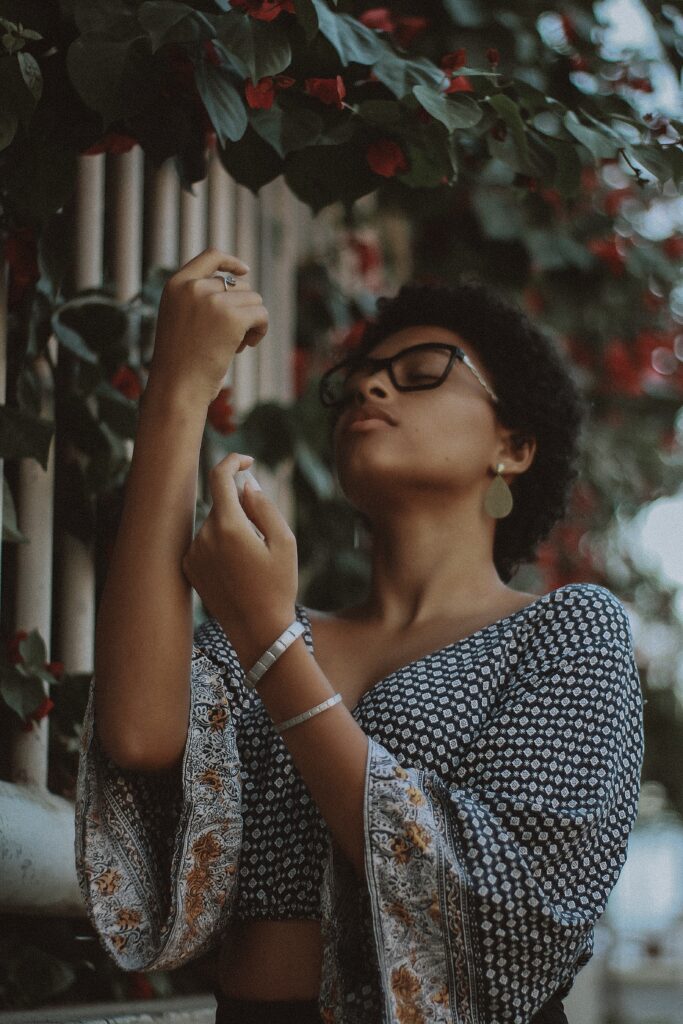
Since there are quite a number of ingredients that aren’t disclosed, buyers are usually concerned about the reactions the chemicals can trigger in their bodies. Luckily, immediate and irreversible damage caused by using perfume one-time, which is referred to as perfume poisoning, is quite rare. However, exposure to fragrances can cause skin sensitivities, such as contact dermatitis, and trigger headaches and allergies over time.
Perfume Ingredients to Avoid
Ingredients to steer clear of in fragrances include:
Phthalates
Phthalates are a group of solvents used to make scents produced by perfume last longer once applied. But multiple studies have shown that phthalates are endocrine disruptors, which means they affect the functioning of hormones in the body. One study revealed that phthalates inhibit the production of testosterone. This leads to fertility issues, such as decreased sperm production in men.
Acetone
In fragrance making, acetone is used to dissolve other ingredients. Research has, however, shown that it’s not very safe for use, as exposure through inhalation can lead to adverse effects on the central nervous system. Some of the symptoms of inhaling acetone include dizziness, headaches, and nausea. This chemical is also a known eye and skin irritant. On labels, acetone can be listed as dimethyl ketone, propane, or 2-propane.
Aldehydes
Aldehydes are compounds used as preservatives in perfumery. Examples include acetaldehyde, acrolein, and formaldehyde. These chemicals have been found to cause toxicity in respiratory and cardiovascular systems. Breathing in aldehydes can cause narrowed airways and the growth of nasal tumors. Aldehydes also irritate the skin and eyes.
Camphor
This is one of the ingredients used to provide scent to fragrance formulations. Its pleasant smell can induce allergic reactions such as itching on the skin and a burning sensation in the nose and eyes.
Ethyl Acetate
In perfume making, ethyl acetate is used both for its sweet aroma and as a solvent. When inhaled, it may present issues such as the throat, nose, and eye irritation. It can also cause unconsciousness. Exposure to high concentrations of ethyl acetate can compromise the nervous system and prompt liver damage.
Perfume Effect on the Brain
Fragrance has the ability to uplift your mood, and this is a sign that perfume has a direct effect on the brain. Unfortunately, the effects that we may experience once we apply a nice smelling fragrance could be an indication of a much more unpleasant effect inside our brains.
According to multiple studies, certain chemicals that have been absorbed into the body can breach the blood-brain barrier and affect brain function. This becomes a problem when the compounds that gain access are toxic chemicals such as petrochemicals and phthalates. These chemicals can accumulate in the brain and even cause damage. Phthalates have been associated with lower IQ in children who were exposed to them during pregnancy. This is as a result of reduced neuron and synapse numbers caused by the chemical.
Benefits of Natural Perfume
There are many benefits of using natural fragrance, and they include:
- Safe for Your Body – Natural perfume doesn’t contain ingredients such as acetone that cause skin, eye, or throat irritation when applied topically or inhaled. It instead uses non-artificial ingredients that present no harm to both external and internal body organs.
- Calming and Soothing – Natural perfume contains herbal ingredients that are also used in aromatherapy to create a calming and soothing atmosphere. Instead of assaulting your senses or of those around you, a natural fragrance will induce relaxation and improve your mood.
- Environmentally-Friendly – Many man-made chemicals used in making personal care items are detrimental to the environment. For perfumes, this is especially the case with petroleum-based ingredients such as toluene and aldehydes. If these substances end up in water bodies, for instance, they endanger marine life. The ingredients used in natural fragrances pose no risk to the environment. If you’re environmentally conscious, then you should consider switching from artificial fragrances to natural perfumes.
- Animal-Friendly – Most synthetic compounds need to be tested for efficiency and safety on animals before being approved for use on humans. In the process, many animals are exposed to inhumane conditions that lead to serious defects, illnesses, and even death. Manufacturers who use natural raw materials generally don’t need to perform any tests on animals. Most natural fragrances avoid this sort of exploitation as part of their ethical standards.
- Great for Sensitive Skin – People with sensitive skin may have limited choices with traditional fragrances since most chemicals are irritating. This is rarely a concern with natural perfumes as plant extracts are gentle on the skin.
Types of Natural Perfumes
Natural fragrances are available in the following forms:
- Spray Perfumes – Made with organic alcohol as the foundation solvent, spray perfumes come in liquid form.
- Oil Perfumes and Roll-Ons – Oil fragrances are made by combining essential oils such as jasmine oil with carrier oils like jojoba oil. The carrier oils used normally don’t contribute to the scent but are useful in blending the essential oils and creating a formula. These types of fragrances can be applied using a roll-on ball. They can also be dabbed on the skin.
- Perfume Balms and Solid Perfumes – To make solid or balm fragrances, manufacturers use wax to mix plant extracts with natural oils. The result is a solid formulation that can be applied to spots on the skin using your fingers.
Where to Buy Natural Perfumes
Natural fragrances may not be as common on store shelves as their synthetic counterparts, but you might find them where you shop for other cosmetics. Here are some of the places where you can get a selection of natural perfume brands:
- Sephora – Sephora gives you the opportunity to choose from various brands and fragrance types, which makes it easier to find a natural scent. Sephora has both physical and online stores, so you can choose the one that’s convenient for you.
- The Detox Market – The Detox Market is a personal care and cosmetics store that deals exclusively in green beauty products. Every product included in their inventory is thoroughly tested to ensure that it doesn’t include toxic chemicals. This is a great place to look for natural perfume as half of the work is already done for you in the sense that you won’t have to search through synthetic offers before you find a natural fragrance.
- Amazon – Amazon.com is another place you can find non-toxic perfume from numerous brands and at different price points.
- Skylar – Skylar is a brand that produces natural fragrances that are cruelty-free, phthalate-free, and hypoallergenic. Synthetic dyes are also excluded from the product formulas. You can buy perfumes directly through their online store.
- Lurk – Lurk is yet another exclusive producer of natural perfumes. They use 100 percent pure essential oils and avoid all toxic additives commonly found in man-made fragrances.
Natural Perfume Brands
Here’s a list of the different types of natural fragrances:
Water-Based Perfume Brands
Behnaz Pure Rose

This water-based perfume from Behnaz Sarafpour has only two ingredients: water and rose petals. There are no dyes, preservatives, oils, or alcohols used. It’s an excellent choice if you’re looking for something simple yet effective.
Invisible Monster Water Perfume by CB I Hate Perfume

This water-based fragrance contains oakmoss, sumac, To Yo Ran Orchid, and cedarwood. The resulting scent has lemony hints.
Natural Perfume Oils
Lina Hanson Satori Natural Perfume Oil

Sandalwood, ginger, vanilla, and yuzu, the main perfume ingredients used in this fragrance oil, give it an invigorating fragrance. All oils and extracts used are natural and organic.
Orange Blossom Honey Perfume Oil by Providence Perfume
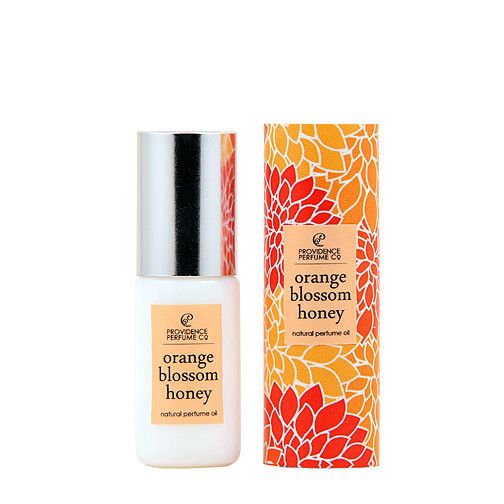
This natural perfume oil contains notes of honey, orange blossom, ginger, neroli, sweet orange, and vanilla. It comes in a mini-sized bottle, which is great for traveling.
As01 Perfume Oil by Lurk

This natural fragrance from Lurk combines floral scents with hints of dry wood, producing a subtle fragrance. Lurk uses organic oils that have been sustainably sourced. Jojoba oil is their carrier oil of choice.
Natural Perfumes at Sephora
Maison Louis Marie No. 04 Bois de Balincouet Eau de Parfum
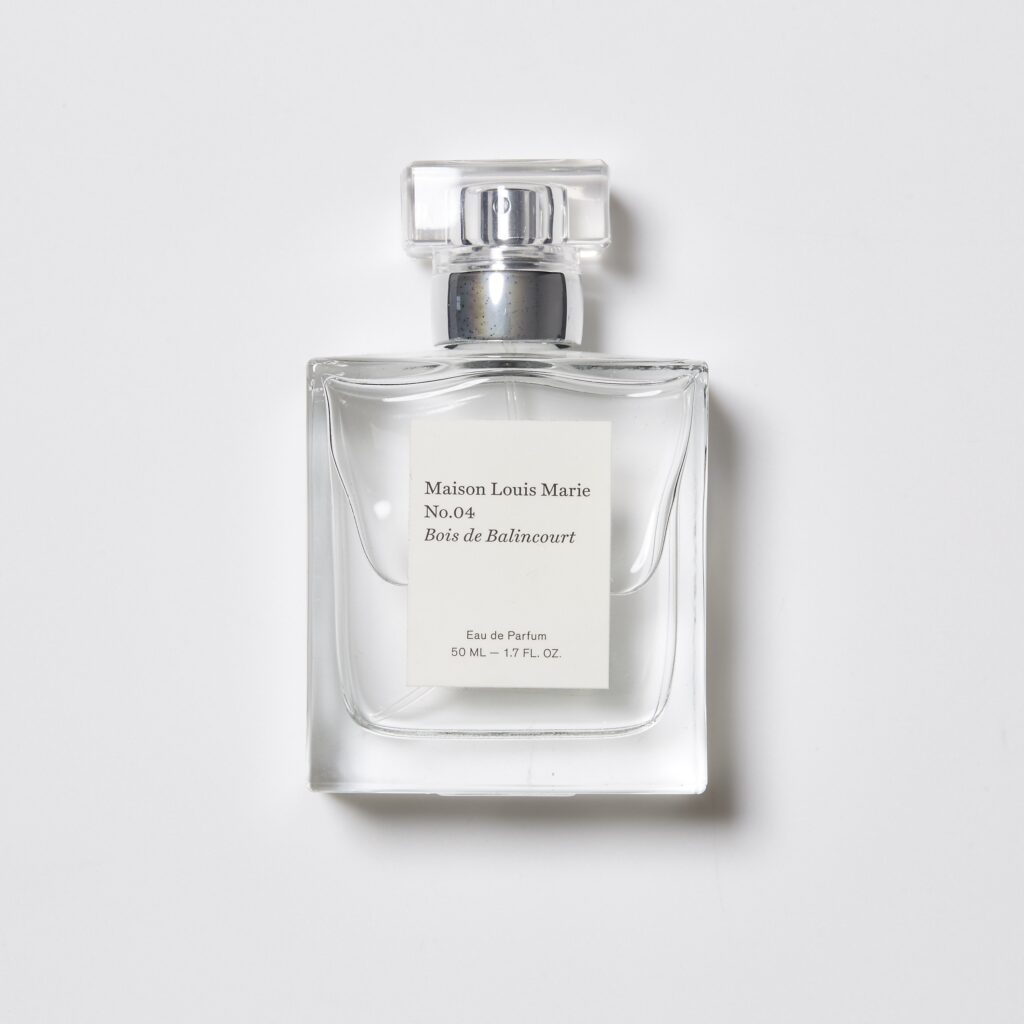
Made of fragrance, water, and alcohol denat, this perfume by Maison Loius Marie avoids more than 50 toxic ingredients flagged by Sephora. These include parabens, sulfates, and phthalates. The brand also doesn’t conduct animal tests for their products.
Skylar Meadow Eau de Toilette

This fragrance contains organic sugar cane alcohol, parfum made using natural oils, cistus flower, rose, patchouli, tuberose, and water. Infused in this formula are orange blossom, white rose, and ethereal tuberose top notes. The Skylar Meadow Eau de Toilette is a great perfume that can be purchased from Sephora if you’re looking for a classic floral scent.
Clean Reserve – Rain

The Clean Reserve Rain perfume comes from Clean Beauty Collective, a brand that makes vegan, phthalate-free, sustainable, and eco-conscious fragrances. Ingredients used include water, alcohol denat, glycerin, fragrance, and aloe leaf juice. The key notes are vetiver, white flower, and bergamot. Clean Reserve Rain is available at Sephora as well.
Phthalate-Free Perfume
Ellis Brooklyn Fawn Eau de Parfum
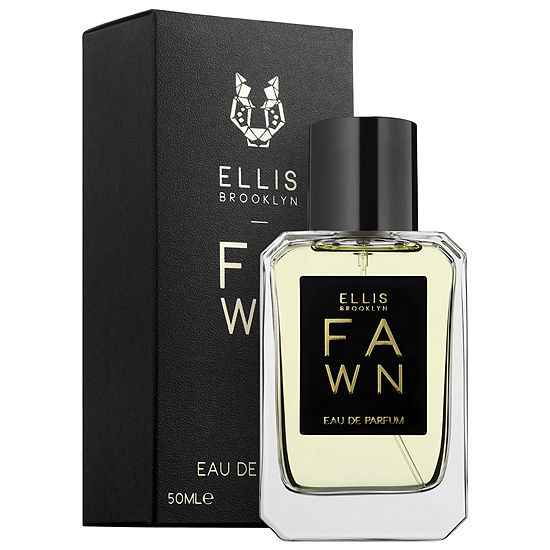
Phthalates and parabens are some of the toxic chemicals excluded from this cruelty-free vegan fragrance. Its top notes include magnolia oil and neroli, while damask rose and coconut are the base notes.
Sweet Incense by Skylar
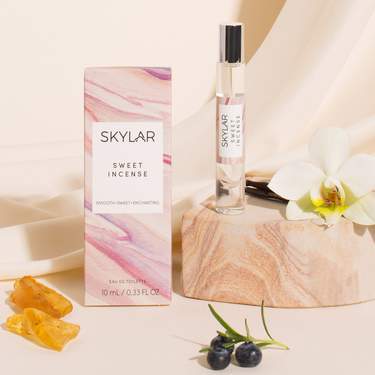
With ingredients such as juniper fruit oil, orange peel oil, and Boswellia carterii oil, this fragrance offers enchanting notes of warm olibanum, vanilla orchid, and juniper berry. Like all other perfumes by Skylar, Sweet Incense is phthalate-free.
Amber Oil by Nemat
Amy from The Luxi Look swears by amber oil as an all-natural perfume.
DIY Perfumes
Perfumery may seem like a complicated process, but it’s possible to make your own fragrance from the comfort of your home. You may already have many of the ingredients required in your kitchen, bathroom or garden. If not, you can easily find them at your local grocery store or online. Let’s look at how to make perfume using a few DIY recipes:
DIY Perfume Oil
Ingredients
- 8 drops sweet orange oil
- 6 drops patchouli
- 4 drops lavender
- 4 drops rose geranium
- 3 drops ylang-ylang
- 2 drops bergamot
- 3 tbsp jojoba oil
- A pinch of dried organic lavender flowers
Instructions
- Mix the carrier oil with the essential oils in a small measuring glass.
- Pour the mixture into a 30ml dropper bottle and add the lavender flowers.
- Cap the bottle, shake, then store in a warm place, but away from direct sunlight.
- Let the oils infuse for several days. Shake them regularly.
- To use, dab drops of this perfume oil on your skin.
DIY Perfume Spray
Ingredients
- 10 tbsp alcohol
- 2 tbsp lemon essential oil
- 4 tbsp distilled water
- 2 tbsp glycerin
Instructions
- Mix the lemon essential oil and the alcohol in a bottle.
- In a separate bottle, mix the water and glycerin.
- Combine the two mixtures in a spray bottle and shake.
- Store in a dark place for two weeks, shaking it daily.
- Spray to use.
DIY Essential Oil Perfume Spray Recipes
Ingredients
- 10 drops bergamot essential oil
- 7 drops tangerine essential oil
- 7 drops lemon essential oil
- 7 drops wild orange essential oil
- 1 tbsp witch hazel
- Distilled water
Instructions
- Put the essential oils into a spray bottle and add 1 tbsp of witch hazel.
- Add distilled water to fill the bottle.
- Cap the bottle and shake well.
- Always shake the bottle gently before each use.
DIY Perfume without Essential Oils
Ingredients
- 1/8 tsp pure vanilla extract
- 2 oz distilled water
Instructions
- Mix the vanilla extract and water in a spray bottle.
- Refrigerate.
- Shake well before use.
How to Make Homemade Perfume with Fruit
One of the easiest ways to make a fruity perfume is by using essential oils extracted from fruits. Here’s a simple recipe for you:
Ingredients
- Grapeseed oil (carrier oil)
- 2 drops sweet orange essential oil
- 3 drops neroli essential oil
- 3 drops mandarin essential oil
- 2 drops cedarwood essential oil
Instructions
- Combine the essential oils in a small bottle. Shake to mix.
- Fill the bottle with grapeseed oil and cap it. Swirl the bottle to mix the oils thoroughly.
- Before use, do a patch test on your skin to rule out any allergic reactions.
How to Make Homemade Perfume with Flowers
Make your own flowery perfume from scratch by following this natural perfume DIY recipe:
- Collect flower petals of your choice. You can use rose, lavender, or jasmine petals. You can also choose to use several varieties for a layered scent.
- Put the petals into a small bowl of hot water, squeezing them lightly. Leave them in the water for an hour.
- Remove the petals from the water, preferably using a cheesecloth.
- Pour the water in a spray bottle.
- Your flower perfume is ready for use.
How to Make Homemade Perfumes Last Longer
One of the biggest concerns about DIY fragrances is that they don’t last throughout the day like commercial ones. This is because the synthetic ingredients present in chemical perfumes that give them their staying power aren’t used in homemade fragrances. Luckily, there are several ways to ensure your homemade perfume smells nice for longer:
- Let it Dry – Once you apply your perfume, let it dry before putting on any clothing. That is because the fabric can rub the scent off, significantly reducing its intensity.
- Use Petroleum Jelly – Apply petroleum jelly to the areas you spray or dab your perfume, such as inside the elbows or the inside your wrists. It will give the fragrance more staying power.
- Avoid Rubbing Your Wrists Together – This is a common practice that actually reduces the longevity of your scent. It’s a much better idea just to pat your wrists together.
- Store in a Cool Place – Keep your natural spray bottle away from heat and direct sunlight. Heat causes the top notes to disintegrate, resulting in a weak aroma that fades quickly.
The Bottom Line
Switching from synthetic to natural fragrances benefits you, the people around you, and the environment. You get to enjoy your favorite scents without having to deal with unpleasant after-effects such as headaches and nausea and also the long-term damage that could be happening to your brain, liver, and other internal body organs. With DIY perfumes, you get the chance to experiment a bit and make your unique fragrance – what could be more fun?
Take your time to browse through the available scents from sustainable brands to find your next favorite natural perfume. You’ll still smell nice without having to worry about any short or long term effects that come with synthetic fragrances.
Did You Enjoy This Article?
If you enjoyed this article, you might also like our articles discussing hygiene and skincare such as Natural Toothpaste, Mineral Versus Chemical Sunscreen: Which is Better?, and Top 14 Skin Care Ingredients to Avoid.

